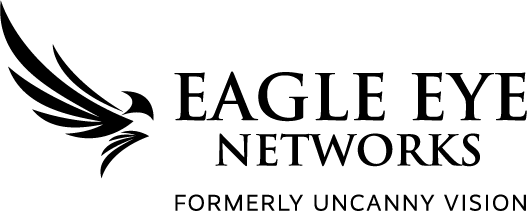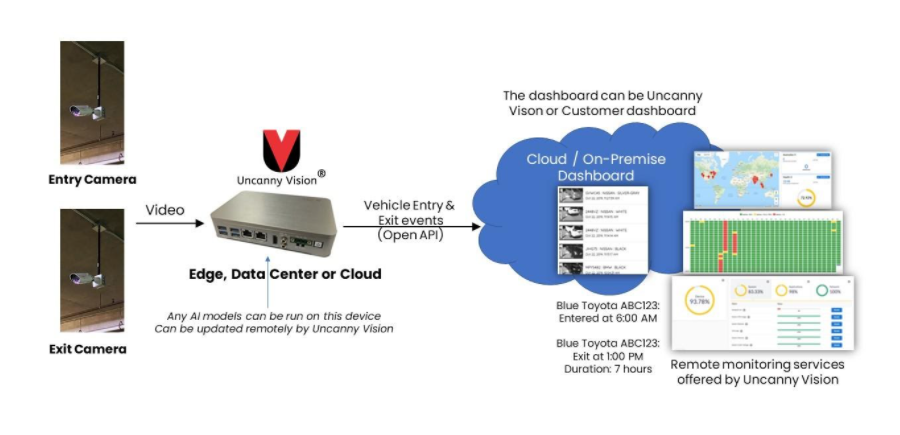Demystifying AI based License Plate Recognition for Parking Operation
Myths surrounding LPR!
License Plate Recognition (LPR) has been around for several decades. However, there are several myths surrounding LPR even today. LPR is expensive; Hard to install; Accuracy is low compared to RFID; Needs specialized cameras; Civil work is required to install these things - are some of the myths surrounding LPR. Let us look at these myths and see if they can be busted!
Why AI for LPR?
Traditional computer vision algorithms were able to provide a pretty good read in the United Kingdom where it was first deployed, as the plates there are clear and standardized. Hence there is a big adoption of LPR in the UK. But LPR has not taken off at a large scale in the US, primarily due to a lack of standardized license plates across various states. We estimate that there are almost 6000 variants of license plates in the US. In countries like India, it is even worse as different states in the country have different standards and plates can be of single line, dual line, stacked as well as regional languages combined.
A traditional computer vision system will provide an accuracy of around 60% in India or in the US. Traditional LPRs also do not work very well under different lighting conditions and angles, etc. They expect a standardized lighting condition with a perfect angle for the License Plate capture. Artificial Intelligence on the other hand can handle these cases easily. It is also important to note that AI based LPR systems can improve the accuracy overtime based on retraining of the AI models, and software updates. But not all LPR vendors offer this service. It’s important to verify if a vendor supports remote software updates for their devices on the field.
| Traditional LPR | AI LPR | |
| Standard plates | ||
| Non-Standard or Regional plates | ||
| Different lighting conditions and angles | ||
| Stacked Characters, multi-line characters | ||
| Loop Detector | Required | Not required |
Table-1: Traditional vs AI LPR
Is civil work required for LPR?
It’s important to capture a perfect picture of the vehicle in traditional computer vision based LPR. The vehicle must come in perfect view of the camera in an exact direction. This is often combined with a need to stop the vehicle completely. These algorithms are not tracking for a vehicle but will take one good picture when the vehicle is in position. The trigger for the camera to take a picture is a separate system called a “loop detector” which involves civil work and laying cables under the ground. When the loop detector detects the presence of the vehicle, it triggers the camera to take a picture of the License Plate. The camera then processes this image to provide a reading. This is costly and cumbersome. In some cases, these images are sent over the cloud for further processing which results in poor latency and reduced accuracy due to the “one-shot” approach.
AI based cameras, however, can track a vehicle continuously. They can also identify a vehicle and classify the vehicle as a truck, SUV, car, minivan etc. However, to do this effectively the computer in the camera is generally not good enough. Hence a simple processing system that reads video streams from the camera is recommended. In this architecture an external processing system continuously processes video at about 15 to 30 frames per second and keeps looking for a vehicle. Once a vehicle is detected it automatically triggers an LPR read. The LPR reads are performed multiple times to improve accuracy.
It is not mandatory to have front license plates in several states in the US. There is not enough space at the entrance of the garage in city garages to look at rear license plates. These challenges can be easily addressed by consulting with the LPR vendor on camera placement strategies. An AI based LPR system such as Uncanny Vision’s LPR can also handle steep horizontal or vertical angles.
Figure-1: Architecture of edge AI LPR System
Do we require special cameras?
If the minimum pixel requirements on the license plate capture are met, any general IP camera can be used for the LPR system at low speeds. There are few cameras which allow finer control of gain, exposure, and internal IR, which are perfect for this application. Depending on the speed of traffic, the requirements for the camera and the processing system to perform LPR reads increase dramatically.
Is the LPR system expensive?
Depending on the system, the cost of an AI based LPR system to automate a parking lot can be as low as $1000 per lane. Some of the vendors even provide such systems on a Hardware-as-a-Subscription (HaaS) model. This means that operators will not have to incur any maintenance, repair, or replacement costs. If any part of the LPR system ever needs a repair, upgrade or replacement that would be covered by the HaaS subscription. Combined with subscription fees comes a Service Level Agreement (SLA) for LPR read rates, so operators can be rest assured that their investment is indeed generating the results that they desire.
What is Edge-AI?
Edge-AI is a system where the AI models to process the video stream is run at the premise such as a hardware installed at the garage. The device does not need to be connected to the internet to read license plates and can make decisions in real time. This is especially critical for LPR based access control scenarios, where reads must be compared against a list of monthly or prepaid customers, and gates must be vended in less than a second. Any response that is slower than this does not result in a good customer experience. Some systems capture the picture of the car and send it out to the cloud for processing a license plate image. Such systems cannot be used for access control applications due to their slower response times aka latency. They also send a lot of data to the cloud resulting in privacy, bandwidth, and cost issues.
What is the ROI?
There are three primary use cases: access control, revenue monitoring in valet operation, and enforcement in a gateless garage. Let’s take a look at ROI in each of these scenarios.
Access Control: An access control solution can be revenue such as parking in a stadium or no-revenue such as in a Homeowners Association (HoA). In a revenue-controlled scenario LPR provides a premium customer experience, increases revenue by improving repeat customers, and cutting down operational costs. In a non-revenue-controlled scenario for an HoA, depending on the size of the HoA it could be less than 1 USD per month in monthly maintenance fee, which would mean that an LPR solution is as competitive if not less than the cost of RFID tag.
Revenue Monitoring: A high end parking lot in downtown Manhattan for instance can cost as much as $10 per hour. An LPR system can provide accurate information on record of each vehicle entering and exiting the facility. Customers have seen their monthly revenue collection going up by almost 10% after the installation of LPR system primarily due to avoidance of pilferage.
Enforcement: In a gateless garage, enforcement happens by using a mobile LPR system which are specifically designed vehicles mounted with LPR cameras. An enforcement officer must drive the vehicle around looking for violators. Compared to this system, an LPR system can automate enforcement under $2000 for a single entry-exit garage. The LPR based enforcement system can notify the operator of the violator’s license plate number, make, color, duration, repeat violations, number of violations now, etc. An enforcement officer receiving these notifications can decide which parking lot he needs to drive to, just look for a handful of vehicles he has in his list and issue a ticket with evidence images printed. One enforcement officer can handle many garages, increasing the enforcement revenue at the same time cutting down on cost of enforcement.
LPR as a Service
The most common challenge operators and parking OEMs face when adopting LPR is during operation and making sure the system continues to work and provide the accuracy required for an automated parking system. While most systems provide a reasonable accuracy of more than 80%-85%, it is not good enough for parking operations. Also, such system’s accuracy can vary from place to place and when left unmonitored can slowly deteriorate. LPR as a Service offered by vendors such as Uncanny Vision provides a guaranteed accuracy of greater than 95%. If the accuracy at a location is not satisfactory, it is up to the software vendor to do site specific training and improve the accuracy of the location. As can be easily seen, this is not possible without remote monitoring and remote fleet management capabilities. Also, a system that is based on Artificial Intelligence only can provide this feature of site-specific training.
What does the future look like?
While trusted LPR with an SLA provides a guaranteed accuracy of greater than 95%, a signature model can be combined along with LPR to improve accuracy of plates behind a bike rack, or trailer hitch, or covered with mud or snow or ice. In such cases even if several characters are blocked, the LPR system can identify the vehicle and calculate duration at the exit gate.
The cameras installed on the garage can be used for additional AI analytics. One customer has used the same camera to perform security analytics in the night i.e., the camera will be used to read LPR during daytime when the garage is open. After hours, the image from the camera is used to identify vagrants to notify the security guards on patrol.
AI based vision can also take a larger role in the whole-garage parking-monitoring, enabling real-time insights into how your customers are using the facility.


